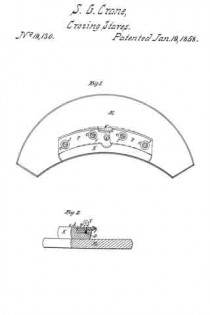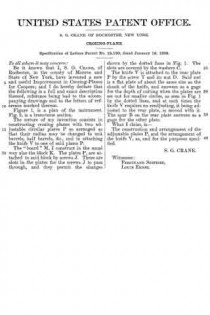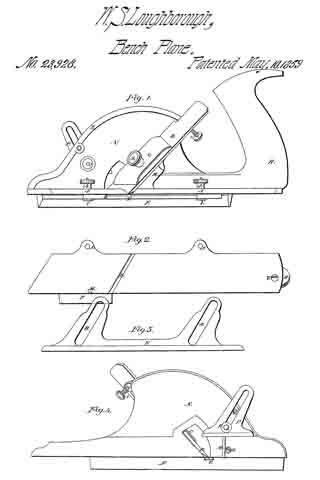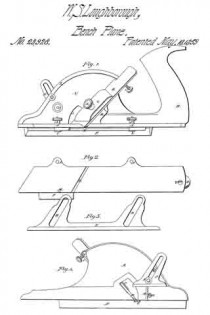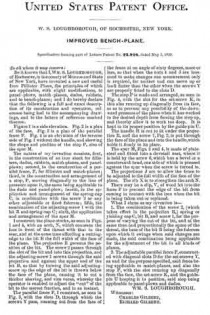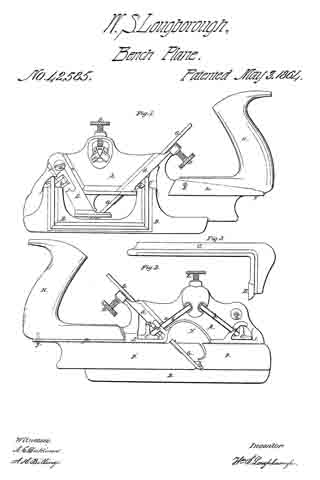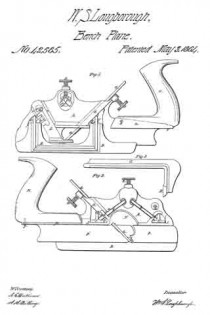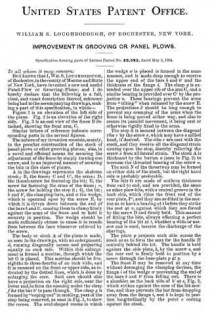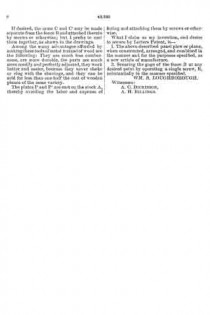No. 19,130 – Crozing Plane (S.G. Crane) (1858)
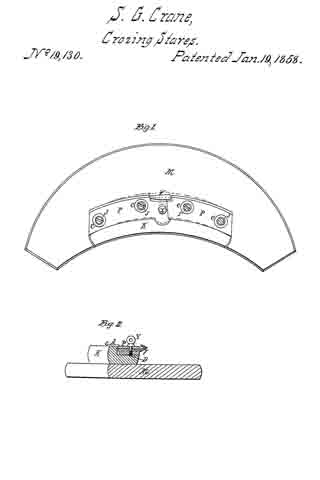
UNITED STATES PATENT OFFICE.
_________________
S. G. CRANE, OF ROCHESTER, NEW YORK.
CROZING-PLANE.
_________________
Specification of Letters Patent No. 19,130, dated January 19, 1858.
_________________
To all whom it may concern:
Be it known that I, S. G. CRANE, of Rochester, in the county of Monroe and State of New York, have invented a new and useful Improvement in Crozing-Planes for Coopers; and I do hereby declare that the following is a full and exact description thereof, reference being had to the accompanying drawings and to the letters of reference marked thereon.
Figure 1, is a plan of the instrument.
Fig. 2, is a transverse section.
The nature of my invention consists in constructing crozing planes with two adjustable circular plates P so arranged as that their radius may be changed to suit barrels, half barrels, &c., and in attaching the knife V to one of said plates P.
The “board” M, I construct in the usual way also the block K. The plates P, are attached to said block by screws J. There are slots in the plates for the screws J to pass through, and they permit the changes shown by the dotted lines in Fig. 1. The slots are covered by the Washers C.
The knife V is attached to the rear plate P by the screw Y and its nut D. Said nut is a flat plate of about the same size as the shank of the knife, and answers as a gage for the depth of cutting when the plates are set out for smaller circles, as seen in Fig. 1 by the dotted lines, and at such times the knife V requires no readjusting, it being adjusted to the rear plate, is moved with it.
The spur B on the rear plate answers as a gage for the other plate.
What I claim, is —
The construction and arrangement of the adjustable plates P, and the arrangement of the knife V, as, and for the purposes specified.
S. G. CRANE.
Witnesses:
FERDINAND SEIFRIED,
LOUIS ERNST.

